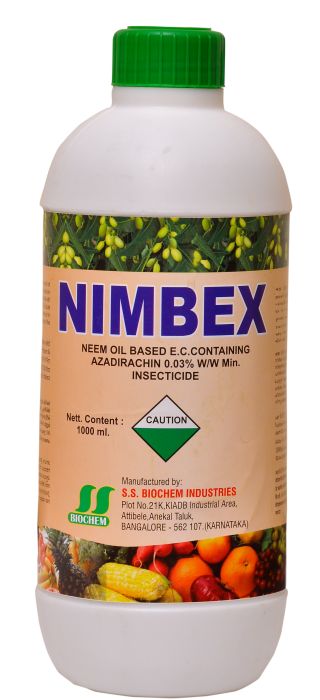Nimbex is an eco-safe Azadirachtin based Botanical pesticide which is quite effective against wide range of pests. Nimbex has the unique quality of breaking the resistance developed by major pests against chemical pesticides.
Nimbex is extracted from neem seed kernels and it is an ideal natural product to apply area all the crops and especially on the crops like Tea, Coffee, Grapes etc., where pesticide residue poses a major threat to the export of the end produce.
Mode of a action
1. It acts as a repellant thereby preventing the pest influx on the plant surface so Nimbex provides a protective cover from pest.
2. It acts as an antifeedant by which it prevents the pests from feeding on the plant parts and insects get killed by continuous starving.
3. Nimbex has insect growth inhibitory qualities, which disturbs the metabolism of the pest during various phases of its development when absorbed in the body. It interferes with the molting process of the larvae and prevents them turning into pupae. Even if the pupation takes place the adults will emerge as malformed and unfit for reproduction.
4. Nimbex does have ovicidal action. It penetrates the eggshell and kills the embryo thus preventing the egg from hatching.
5. Nimbex deters the pests from laying eggs on plant surface. The pests find Nimbex sprayed plants as less favorable targets for their egg laying.
6. It is a eco-friendly, non-toxic to human beings, animals and beneficiary insects and is a safe product at all stages of crop growth without any problem of pesticide residue.
7. It is compatible with other insecticide, fungicides and can be used as a combination spray to control the pest population.
Usage
1. Spray 1 - 1.25 liters of Nimbex per acre when used as an single control measure especially as prophylactic measures or immediately after noticing the early pest incidence or symptoms of damage.
2. If the pest population is high, mix Nimbex with suitable bio pesticides at the rate of 500 - 600 ml / acre.
3. Apply Nimbex from the early stage of the crop to avoid pest incidence.




